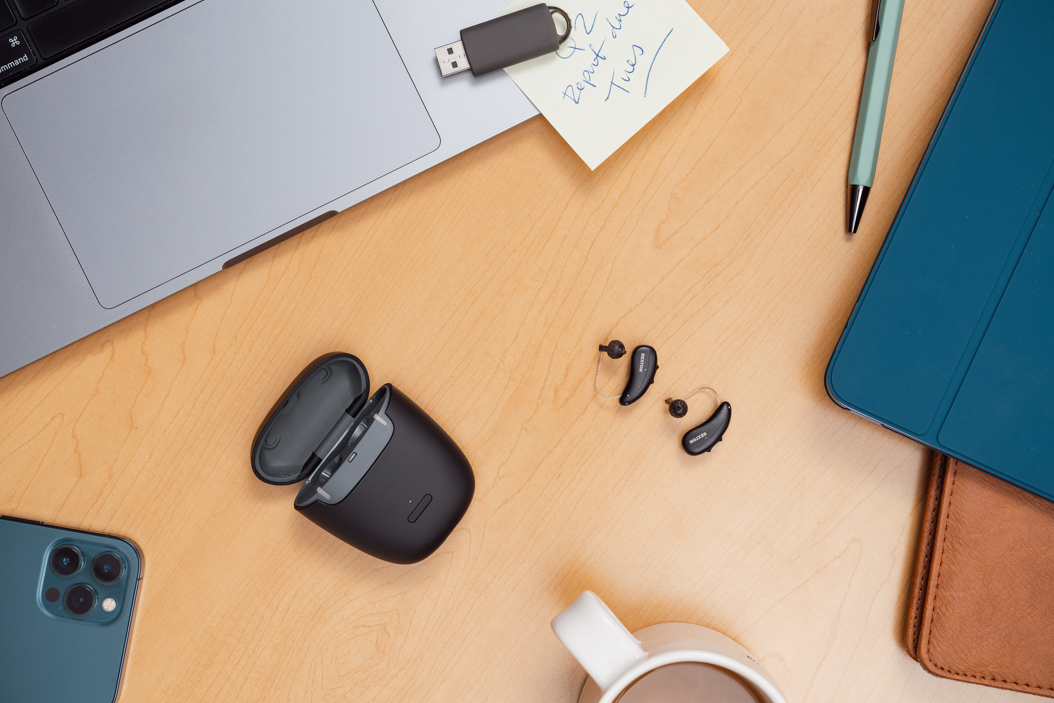 Hearing aids are tiny, powerful devices that are built with over 300 parts. As your day-to-day companions, they can be exposed to moisture, sweat, and environmental elements that can affect their performance. To maintain a long lifespan, routine drying is essential, even if you don’t think you worked up a sweat. Here’s what you need to know about the different types of hearing aid dehumidifiers available, how they work, and what to do in case of moisture emergency:
Hearing aids are tiny, powerful devices that are built with over 300 parts. As your day-to-day companions, they can be exposed to moisture, sweat, and environmental elements that can affect their performance. To maintain a long lifespan, routine drying is essential, even if you don’t think you worked up a sweat. Here’s what you need to know about the different types of hearing aid dehumidifiers available, how they work, and what to do in case of moisture emergency:
A passive dehumidifier is a simple, affordable option that uses materials such as small crystals or gel beads to absorb moisture from hearing aids. The dehumidifier is typically made from plastic and has a cannister into which the hearing aids are placed. The airtight lid closes out environmental moisture while the absorbing materials get to work gently absorbing moisture built up from the devices.
When to Use: Ideal for daily drying in mild to moderately humid environments and for people with low to normal activity levels. Hearing aid wearers may routinely place their hearing aids in the dehumidifier overnight so they are fresh for use by the morning.
Electric dryers are more advanced and often include features like gentle heat and a fan to thoroughly remove moisture. Some models also incorporate UV-C light for sanitization and timers for a quick-dry option. Depending on the selected features, dryers can be considerably more expensive than non-electric dehumidifiers.
When to Use: Suitable for users in more humid climates or those with a more active lifestyle who experience frequent moisture exposure.
If you travel frequently or are planning a holiday, portable dehumidifier cannisters and dryers are available. These function similarly to the above options but are created with more compact casing and often have fewer features than some of the higher end dryers.
When to Use: Especially if you are visiting a humid area, will participate in water activities, or will experience increased physical activity, a dehumidifier or dryer is a good idea to pack in your suitcase or backpack and use during down-time.
For cases of severe moisture exposure or when hearing aids are not functioning optimally, hearing care professionals can help with top drying technology. Using specialized equipment like vacuum-based dryers or advanced electric dryers, professionals may be able to extract moisture from inside the hearing aids and sometimes save the devices if they were accidentally immersed in water.
When to Seek Help: If you have normal activity levels and live in a mild to moderately humid location, getting a thorough hearing aid cleaning once per year could be sufficient. Speak with your hearing care professional to understand the best routine for your devices. If you’ve experienced prolonged exposure to water, heavy sweating, accidentally dropping hearing aids in water, or if the hearing aids are exhibiting signs of damage (e.g., distortion or intermittent sound), seek care immediately.
By integrating proper drying techniques into your routine and seeking out help during an emergency, you can extend the lifespan of your hearing aids and maintain optimal performance. Whether through a simple non-electric dehumidifier or professional-grade drying device, keeping moisture at bay is key to ensuring your hearing aids deliver the best sound quality.
Speak with a hearing care professional if you have questions and to understand the best way to clean and maintain your devices.